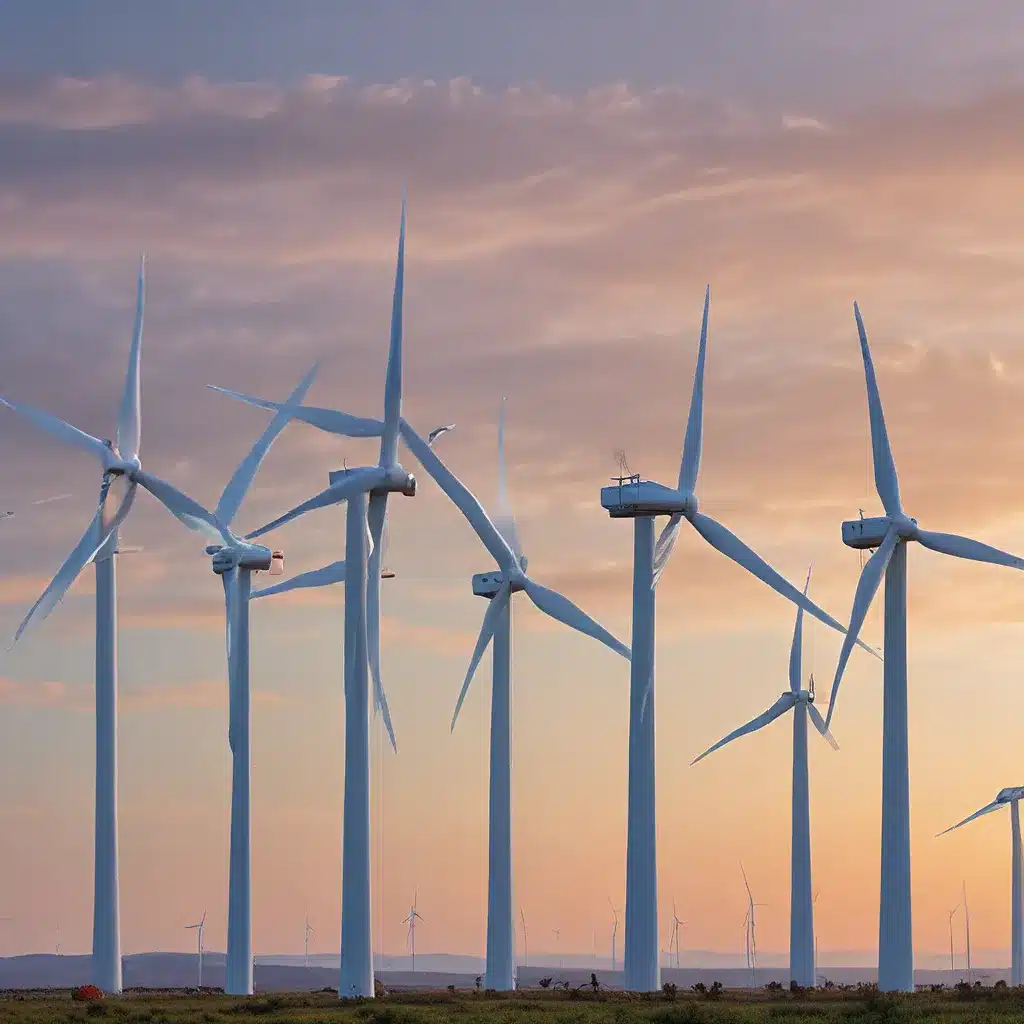
As someone who’s always been fascinated by renewable energy, I’ve been closely following the latest advancements in the world of wind power. And let me tell you, the innovations happening in this space are nothing short of mind-blowing! From breakthrough technologies to ambitious projects, the future of wind energy is looking brighter than ever.
Harnessing the Power of the Wind
It’s no secret that wind power has been a game-changer in the renewable energy landscape. But did you know that the industry is constantly evolving, with engineers and researchers pushing the boundaries of what’s possible? The latest developments in wind turbine technology are truly remarkable.
For starters, we’re seeing significant improvements in the blades that capture the wind’s kinetic energy. Thanks to advancements in 3D printing, these blades are becoming longer, lighter, and more efficient. And the addition of a gently curved tip helps the blades make the most of even the lightest of winds.
But the innovations don’t stop there. Computer modeling of wind flow patterns is now allowing us to determine the optimal locations and configurations for wind farms, ensuring we’re maximizing the energy we can harness from the wind. And get this – there’s even talk of Airborne Wind Energy systems that operate like kites, reaching higher altitudes where the winds are stronger.
Unleashing the Power of AI
One of the most exciting developments in the wind energy sector is the integration of artificial intelligence (AI). This technology is revolutionizing the way we manage and optimize our wind farms.
Take Siemens Gamesa, for example. They’re partnering with NVIDIA to apply AI surrogate models to their offshore wind farms, allowing them to maximize power output while minimizing costs. And the results are nothing short of incredible – they’re able to accelerate high-resolution wake simulations by a staggering 4000%, reducing the time from 40 days to just 15 minutes!
But AI’s impact on wind energy doesn’t stop there. Noteworthy AI, a member of the NVIDIA Metropolis ecosystem, has deployed smart cameras powered by NVIDIA Jetson technology to automate the inspection of power lines, poles, and other critical infrastructure. This not only enhances safety but also helps utilities keep their grids running at peak efficiency.
Harnessing the Sun and the Waves
While wind power is undoubtedly a shining star in the renewable energy universe, it’s not the only game in town. The sun and the waves are also playing crucial roles in powering our future.
Solar power has been making impressive strides, with advancements in photovoltaic technology. We’re now seeing solar panels with efficiency rates of up to 30%, a significant improvement over the industry standard of 15-22%. And the development of perovskite crystals has opened up the possibility of photovoltaic building materials, from windows to roof tiles and even wearable fabrics.
But the innovations don’t stop there. Hydropower, often overlooked in the renewable energy conversation, is also making huge leaps forward. The Archimedes Hydrodynamic Screw system, for example, is revolutionizing low-head hydropower, allowing us to generate electricity from even the gentlest of slopes.
The Holy Grail of Clean Energy: Nuclear Fusion
As if the advancements in wind, solar, and hydropower weren’t enough, there’s another groundbreaking technology on the horizon: nuclear fusion. Long considered the stuff of science fiction, this clean energy solution is now tantalizingly close to becoming a reality.
The ITER project, a global collaboration of scientists and engineers, is working to demonstrate the feasibility of nuclear fusion on a massive scale. By heating hydrogen isotopes to an astounding 150 million degrees Celsius, they aim to unleash a process that could potentially release 10 times more energy than it takes to power.
And the technology behind this ambitious endeavor is nothing short of awe-inspiring. Capgemini, a technology services company, has been working with ITER for over a decade, providing a raft of support from engineering expertise to the development of a digital twin – a precise digital replica of the proposed Tokamak reactor. This digital twin will allow the team to test every element, simulate the construction process, and identify and resolve issues before a single component is even built.
The Future is Bright
As I delve deeper into the world of renewable energy, I can’t help but feel a sense of excitement and optimism. The advancements happening in wind power, solar, hydropower, and even nuclear fusion are truly remarkable, and I can’t wait to see what the future holds.
Of course, there’s still a long way to go, and the road ahead is not without its challenges. But with the ingenuity and dedication of the scientists, engineers, and entrepreneurs working tirelessly to harness the power of clean energy, I’m confident that we’re on the cusp of a renewable energy revolution.
So, what’s next? Well, if you ask me, the possibilities are endless. From AI-powered wind farm optimization to fusion-powered cities, the future is bright, and I can’t wait to see what the renewable energy pioneers have up their sleeves. Stay tuned – the energy revolution is just getting started!

